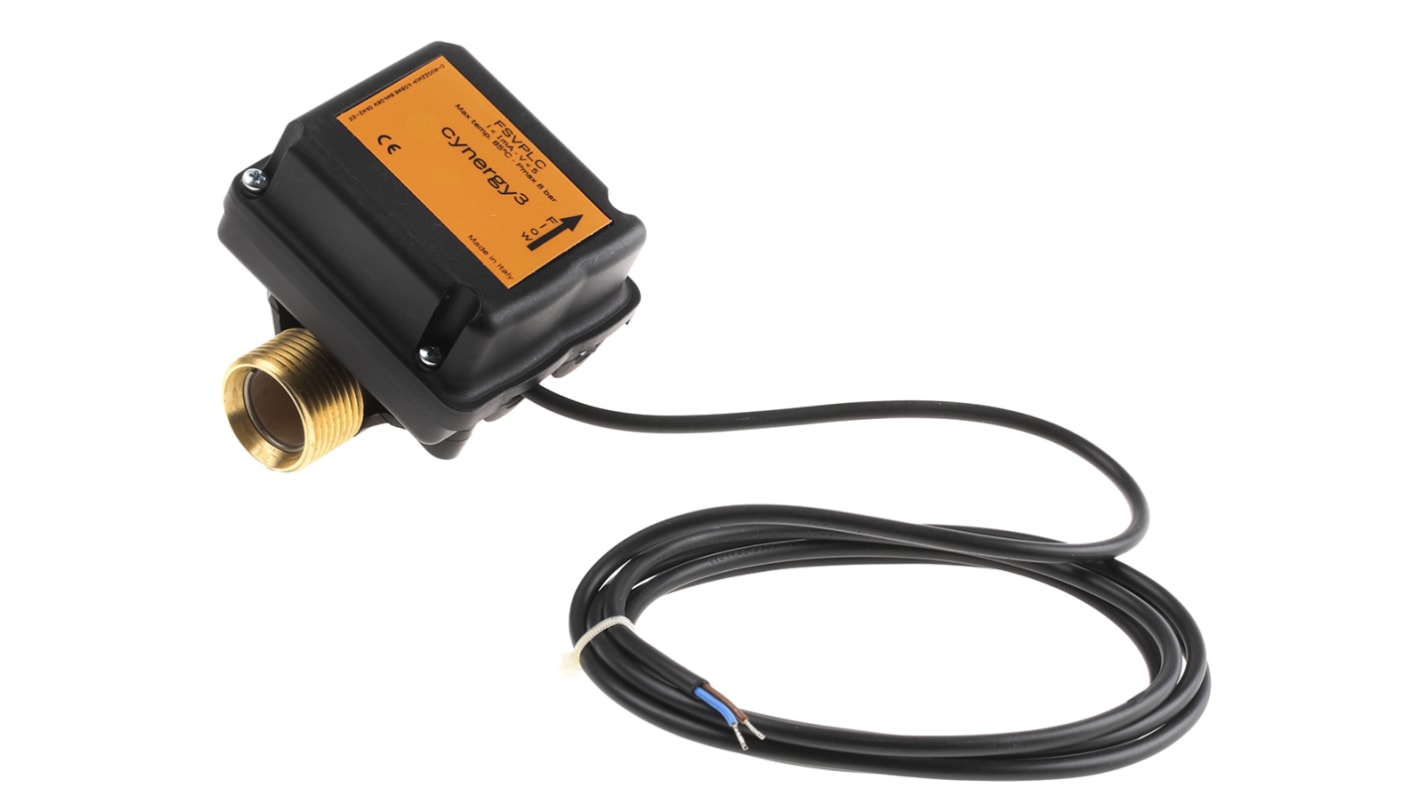Sensata Cynergy3 FSVPLC Series In-line Flow Switch for Liquid, 3 L/min Min, 80 L/min Max
- RS Stock No.:
- 780-0282
- Mfr. Part No.:
- FSVPLC30
- Brand:
- Sensata / Cynergy3

Subtotal (1 unit)*
£103.70
(exc. VAT)
£124.44
(inc. VAT)
FREE delivery for orders over £50.00
In Stock
- 4 unit(s) ready to ship from another location
Need more? Click ‘Check delivery dates’ to find extra stock and lead times.
Units | Per unit |
|---|---|
| 1 + | £103.70 |
*price indicative
- RS Stock No.:
- 780-0282
- Mfr. Part No.:
- FSVPLC30
- Brand:
- Sensata / Cynergy3
Specifications
Technical Reference
Legislation and Compliance
Product Details
Find similar products by selecting one or more attributes.
Select all | Attribute | Value |
|---|---|---|
| Brand | Sensata / Cynergy3 | |
| Media Monitored | Liquid | |
| Device Type | In-line | |
| Minimum Flow Rate | 3 L/min | |
| Maximum Flow Rate | 80 L/min | |
| Supply Voltage | 5 V ac | |
| Pipe Diameter Range | G1 | |
| Connection Type | 1 BSP Female | |
| Maximum Pressure | 8bar | |
| Material | Brass | |
| Maximum Media Temperature | +85°C | |
| Series | FSVPLC | |
| Maximum Operating Temperature | +85°C | |
| Current Rating | <1 mA | |
| Select all | ||
|---|---|---|
Brand Sensata / Cynergy3 | ||
Media Monitored Liquid | ||
Device Type In-line | ||
Minimum Flow Rate 3 L/min | ||
Maximum Flow Rate 80 L/min | ||
Supply Voltage 5 V ac | ||
Pipe Diameter Range G1 | ||
Connection Type 1 BSP Female | ||
Maximum Pressure 8bar | ||
Material Brass | ||
Maximum Media Temperature +85°C | ||
Series FSVPLC | ||
Maximum Operating Temperature +85°C | ||
Current Rating <1 mA | ||
- COO (Country of Origin):
- CN
Sensata Cynergy3 In-Line Flow Switch, 5V AC, 8 Bar - FSVPLC Series - FSVPLC30
Use this in-line flow switch from Sensata Cynergy3 to automatically control flow rates and reliably monitor the motion and pressure of liquids. You can use the versatile switch to directly control a pump or link it to a PLC (programmable logic controller) to send signals to open or close the supply of liquid to a tank. It has a 1-inch BSP connection for a simple and secure attachment. A brass tube provides a strong, corrosion-resistant connection for an extended lifespan in harsh operating conditions. This switch is suitable for use in industrial air conditioning systems and heating applications.
Features & Benefits
• Maximum pressure of 8 bar for use in high-pressure systems
• Automatic shut-down function for improved efficiency
• Automatic shut-down function for improved efficiency
Why do you need a flow switch to control a pump?
A pump flow switch is typically installed to shut down power to a pump temporarily if there's a problem with the water supply. It helps prevent water pumps from overheating or becoming damaged if they continue to run in low-flow or no-flow situations.
Related links
- Sensata Cynergy3 FSVPLC Series In-line Flow Switch for Liquid 80 L/min Max
- Sensata Cynergy3 FSP10 Series In-line Flow Switch for Liquid 80 L/min Max
- Jumo JUMO flowTRANS US W01 Series Analog Flow Meter for Liquid 80 L/min Max
- Sensata Cynergy3 FSU Series Flow Switch Flow Switch for Liquid 0.53 L/min Max
- Sensata Cynergy3 FSU Series Flow Switch Flow Switch for Liquid 0.24 L/min Max
- Sensata Cynergy3 FSU Series Flow Switch Flow Switch for Liquid 0.47 L/min Max
- Sensata Cynergy3 FSU Series Flow Switch Flow Switch for Liquid 0.99 L/min Max
- Sensata / Cynergy3 UF Series Sensor/Switch without Indicator Flow Meter for Liquid 8 L/min Max
